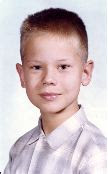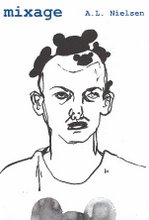
 Back at the beginning of this blog exercise I mentioned that I was reading Ed Roberson's new book, City Eclogue, published by Atelos books and available through Small Press Distributing.
Back at the beginning of this blog exercise I mentioned that I was reading Ed Roberson's new book, City Eclogue, published by Atelos books and available through Small Press Distributing.First of all, a word about Atelos. This series of books is edited by Lyn Hejinian and Travis Ortiz and in the end will be a list of fifty books, each commissioned by the editors and each, as the editors put it, "involved in some way with crossing traditional genre boundaries," a description certainly fitting Roberson's life's work. This is volume 23 in the series, and the previous 22 on the list evidence the editors' eclectic scope. The Atelos editors have sometimes honored the already well-established, such as Fanny Howe and Clark Coolidge, but just as often they have published writers at earlier stages of their public recognition, such as Kathy Lou Schultz and Jalal Toufic. When I first encountered Lyn Hejinian she was publishing her Tuumba Press series, which remains one of the most solid collections of chapbooks in the history of American editing. Atelos, her current project with Ortiz, is the only series that makes me feel compelled to get each volume as it comes out, even in those cases where I am not familiar with the author's previous work.
Roberson, though, is a known quantity, or to be more precise, a should-be-much-better-known quantity. Beginning in the 70s with books like WHEN THY KING IS A BOY and ETAI EKEN, Roberson has persisted in his course, writing poems that are like no others, poems that consistently overturn our expectations about how poems work and what sorts of work they might do. He has done all this, for the most part, off the stage of the American literary reputation apparatus, despite having won some considerable awards. But he always had an audience.
Some years ago I heard Roberson for the first time on a panel at a conference. He was giving a talk about the evolution of his poem "Ask for 'How High the Moon'" across its history of drafts. It's one of the major poems of his career, and the talk was intriguing in just the way poetry workshops should be but usually are not. The talk also included a couple of moments of reflection on his own status within American poetry, and I've never forgotten one thing he said. He was speaking of the day he received a phone call out of the blue from Nathaniel Mackey, a poet Roberson had long admired. Mackey was calling to ask Ed if he might be willing to submit some of his poems to HAMBONE. Roberson said that his feeling that day was that the pebble had finally hit the water. He let us wonder about that image for a few seconds, then explained. "It's like when you drop a pebble into a deep well. You keep waiting and waiting to hear that plop as it enters the water at long last." -- a marvelous description of how it feels to hear from a reader long after having sent a poem out into the world of print.
Many of Roberson's poems seem to work in much that way -- you listen with an ear cocked to the depths, and then comes that moment of entry. Take these powerful moments from CITY ECLOGUE:
That powerful level of segregationists
the civil rights movement never reached
never guilty or active agent within
the necessarily narrow focus needed to pin
never guilty of any more obvious
than wanting things this way
I've long felt that Lorenzo Thomas's meditation on the demonstrations in Birmingham, Alabama, "THE BATHERS," was among the greatest poems to arise from the American Civil Rights Movement. Several poems in CITY ECLOGUE equal Thomas's poem. At a time when younger generations are in danger of forgetting the feelings of peril that attach themselves to the struggle for equality, history has a way of suddenly pulling back its robe and revealing the never wholly occluded terrors of the Till murder, or the assassinations of the Civil Rights workers in Mississippi. There are many still alive among us who committed these acts of terrorism, more still who acquiesced in them. Roberson's poems over and over again turn on a return to the worn images of our history, a return that forces us to confront that which moves most strongly within us as we inch our way into the new century:
the mirrors around the lunch counter
reflected the face
to face--the cross-mirrored depth reached
infinitely back into either--
the one pouring the bowl over the head of
the one sitting in
at that counter
And then later in the same poem, titled "Sit In What City We're In" --
we are
reflected in the face to face we are
a nation facing ourselves our back turned
on ourselves.
From "Stand-in Invocation" through to the concluding "Eclogue," Roberson's new book gives us many such moments, wherein we catch ourselves reflected in the texts of our own refracting past, splayed in the play of colors in time. Seldom has a book so assiduously addressed itself to our cities, to the corners just past where our past used to stand, to those intersections where we glimpse our own receding selves in the traffic. And not since Creeley drove madly into that dark night has a poet so described our surround:
death surrounds us is our uncurbed circumference.
We map our way with only the bearing
of surrounding life itself borderless
uncontrolled by the surface of our self.




















No comments:
Post a Comment